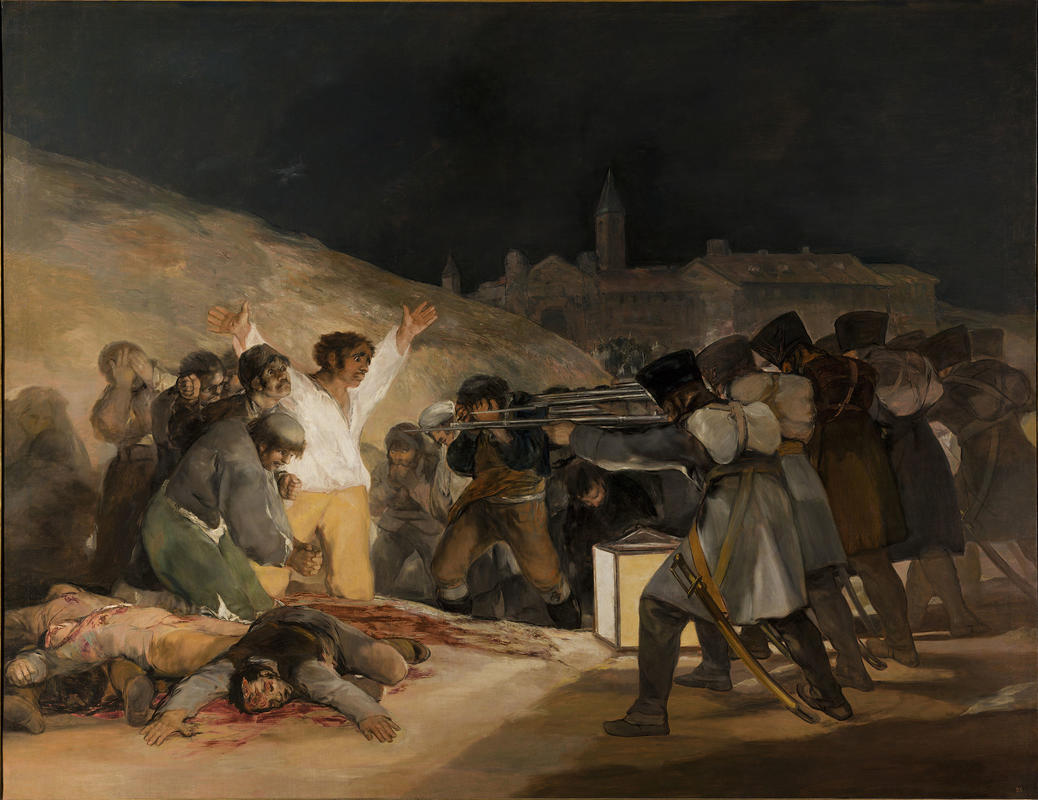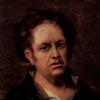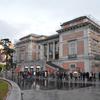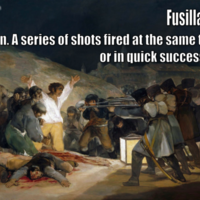More about The Third of May 1808

Contributor
To make a long story short, The Third of May 1808 depicts a battle between the Spanish and the French, who both wanted to control access to the Mediterranean. Not exactly refuting the stereotype that the French are rude, but let’s move on.
When the Spanish weren’t stoked on the idea of having a new ruler, they had an uprising. To which the French replied, “The population of Madrid, led astray, has given itself to revolt and murder. French blood has flowed. It demands vengeance. All those arrested in the uprising, arms in hand, will be shot.” So here in this painting are Spanish rebels…in Madrid…being shot. Maybe they're rude, but they keep a promise!
It’s incredibly apparent who Goya sided with, not only because he is Spanish but because of the Jesus-y figure in the middle of the painting, who appears to be sacrificing himself for his rather terrified and/or dead companions. He has his arms stretched out as if he is being crucified and his white shirt and yellow pants shine in the image. If the outstretched arms weren’t enough to make him seem like a religious figure, there is even an indented scar on Jesus-y guy’s hand, just like the one that other Jesus had.
Standing at 8 feet 4 inches high, this painting might as well be a live-action video game with how in your face it is. We can see the fear, the panic, the acceptance, and whatever other emotions are on the Spanish men’s faces. But mostly we just see how sh*t outta luck they are.

Contributor
Charles IV of Spain was a weak king. He preferred to hunt, not govern.
He was totally dominated by his wife, Maria Louisa of Parma. In addition to running his life, Maria Louisa is believed to have frequently cheated on him. Ok, the last part wasn't that noteworthy in 19th century courts.
But, Napoleon took advantage of the situation. He forced Charles IV out and installed his brother as king of Spain. When the people of Spain rioted, Napoleon had many of them shot.
Goya took offense at the shootings, painted this painting, and became one of the earliest pioneers in the field of anti-war activism in art.
Featured Content
Here is what Wikipedia says about The Third of May 1808
The Third of May 1808 in Madrid (also known as El tres de mayo de 1808 en Madrid or Los fusilamientos de la montaña del Príncipe Pío, or Los fusilamientos del tres de mayo. Commonly known as The Third of May 1808.) is a painting completed in 1814 by the Spanish painter Francisco Goya, now in the Museo del Prado, Madrid. In the work, Goya sought to commemorate Spanish resistance to Napoleon's armies during the occupation of 1808 in the Peninsular War. Along with its companion piece of the same size, The Second of May 1808 (or The Charge of the Mamelukes), it was commissioned by the provisional government of Spain at Goya's own suggestion shortly after the ousting of the French occupation and the restoration of King Ferdinand VII.
The painting's content, presentation, and emotional force secure its status as a ground-breaking, archetypal image of the horrors of war. Although it draws on many sources from both high and popular art, The Third of May marks a clear break from convention. Diverging from the traditions of Christian art and traditional depictions of war, it has no distinct precedent, and is acknowledged as one of the first paintings of the modern era. According to the art historian Kenneth Clark, The Third of May 1808 is "the first great picture which can be called revolutionary in every sense of the word, in style, in subject, and in intention".
The Third of May 1808 inspired Gerald Holtom's peace sign and a number of later major paintings, including a series by Édouard Manet, and Pablo Picasso's Massacre in Korea and Guernica.
Check out the full Wikipedia article about The Third of May 1808













